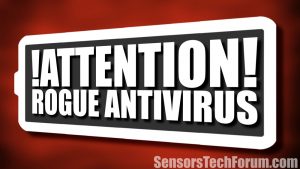Doctor PC is advertised as a free Windows optimizer, but users report that it has been non-beneficial and probably corrupt.
Doctor PC Rogue Program
 Experts classify Doctor PC as a rogue system scanner known to use scare tactics in order to acquire customers. Once in the system Doctor PC will perform a full system scan, and display security alerts warning the user about a number of threats allegedly detected on the computer. To assure the safety of their PCs users are asked to invest in the full version of the product.
Experts classify Doctor PC as a rogue system scanner known to use scare tactics in order to acquire customers. Once in the system Doctor PC will perform a full system scan, and display security alerts warning the user about a number of threats allegedly detected on the computer. To assure the safety of their PCs users are asked to invest in the full version of the product.
Doctor PC has neither threat-detecting capability nor can it remove any infections from your computer. The best thing you can do in this case is to remove the tool itself since it can compromise the security of your machine.

Threat Summary
| Name | Doctor PC |
| Type | Rogue System Optimizer, PUA |
| Short Description | A program that promises to optimize the operating system but may as well put it at risk or compromise its performance. |
| Symptoms | The program may add a browser extension to the browser, and may generate unwanted pop-up ads and alerts. |
| Distribution Method | Freeware Installations, Bundled Packages |
| Detection Tool |
See If Your System Has Been Affected by malware
Download
Malware Removal Tool
|
| User Experience | Join Our Forum to Discuss Doctor PC. |
Doctor PC Distribution
Doctor PC is being delivered via third-party freeware programs the user downloads online. Such installations are often neglected because most users keep on clicking the “Next “button until the installation process is finished. Make sure always to select the Advanced options where you can actually un-tick the additional programs and applications bundled with the initial software.
As a result of the program’s presence, the user may witness various advertisements, related to Doctor PC. Some of the may be promoting the installation of other PUPs including such as other rogue utilities and potentially unwanted programs.
Some of the pop-ups generated by the program could be related to fake virus alerts and various system errors, which may be pushing the user to install a specific program.

Remove Doctor PC – Removal Manual
To remove the Doctor PC unwanted program and all its related files manually from your system, follow the step-by-step removal instructions provided below. If the manual removal guide does not get rid of the program and its ads completely, you may want to use an advanced anti-malware tool. Software like that will keep your system secure in the future.












